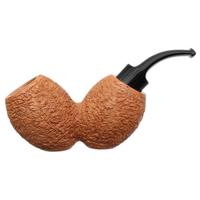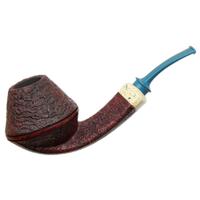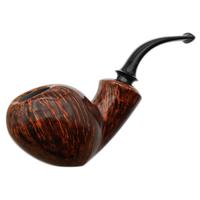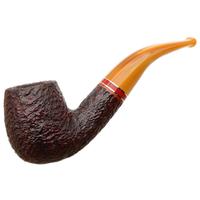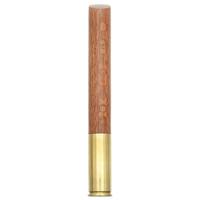Be Wary Of 1 Pound Gawith Bags
- Thread starter bluegrassbrian
- Start date
You are using an out of date browser. It may not display this or other websites correctly.
You should upgrade or use an alternative browser.
You should upgrade or use an alternative browser.
- Status
- Not open for further replies.
I can't believe what wussies you guys are.
Your tobacco is a bit blue... so what? So is Stilton cheese and Gorgonzola. Mold is what gives them their unique flavor and body.
I bent none of you like Hákarl or Surströmming either.
C'mon, grow a pair! Aspergillosis and uncontrollable vomiting builds character. :twisted:
What's the world coming to? :crying:
Your tobacco is a bit blue... so what? So is Stilton cheese and Gorgonzola. Mold is what gives them their unique flavor and body.
I bent none of you like Hákarl or Surströmming either.
C'mon, grow a pair! Aspergillosis and uncontrollable vomiting builds character. :twisted:
What's the world coming to? :crying:
Years back I read an interesting thread in a forum about aged tobacco and that some folks think it's just a bunch of BS. It mentioned (if I remember correctly) that more Euro pipe smokers never bought into the "aged" thing. And often they threw out old tins and retailers maked down the older tins and bags that sat on the shelves.
Some said that the aged thing came about from GLP and his personal take on it and it blossomed from there. (This is not my "belief" as I am only repeating what I read from the postings and what I remember.
I'm not 100% sure where the turth lies but I'll try and google down the thread (if it was from Smokers Forum it's probably long gone) but if it's still floating out there on the interent I'll post it here.
Personally, I do tend to think there is something to be said for aged tobaccos and how they improve with proper storage and old mother time. Yet I also have to believe theres a line in the sand when tobacco loses it's luster and just plain goes blah-tasting bad..or worse yet turns into ugly, stinky mold, tasteless dust or goes into rusty-tin syndrome. And that line in the sand can vary depending on specific blends as well.
And some tobacco blenders vacuum-seal their product, some dont. IMO, thats a big player.
Mason jar storage (when done right) keep things intact as well.
Some said that the aged thing came about from GLP and his personal take on it and it blossomed from there. (This is not my "belief" as I am only repeating what I read from the postings and what I remember.
I'm not 100% sure where the turth lies but I'll try and google down the thread (if it was from Smokers Forum it's probably long gone) but if it's still floating out there on the interent I'll post it here.
Personally, I do tend to think there is something to be said for aged tobaccos and how they improve with proper storage and old mother time. Yet I also have to believe theres a line in the sand when tobacco loses it's luster and just plain goes blah-tasting bad..or worse yet turns into ugly, stinky mold, tasteless dust or goes into rusty-tin syndrome. And that line in the sand can vary depending on specific blends as well.
And some tobacco blenders vacuum-seal their product, some dont. IMO, thats a big player.
Mason jar storage (when done right) keep things intact as well.
OTOH you could PG the hell out of tobacco and it would stay moist, never go moldy and last forever.
Which makes me wonder (and maybe for another thread):
When was the first talk of "aged tobaccos?"
Was it always accepted and well-understood that old tobaccos aged beautifully like cognac, wine, etc.
Or is it a reletively new concept - and one that has taken off with the inception of internet, tobacco forums, etc?
When was the first talk of "aged tobaccos?"
Was it always accepted and well-understood that old tobaccos aged beautifully like cognac, wine, etc.
Or is it a reletively new concept - and one that has taken off with the inception of internet, tobacco forums, etc?
Friction sealed tins, especially the square and rectangular type, rarely form a complete seal. They're slowly leaking from the get go and are pretty hit or miss after 7 years. The round ones would be better since they can distribute the pressure evenly around the perimeter. The canister types seem to do better. But none of these are the equivalent of the old cutter tops. Sealing these friction tins in Mylar may help keep them from drying out when the seal fails, but it's too new a practice to use with any assurance.
The whole notion of widely practiced cellaring is pretty recent, mostly in the last 20 years or so. There were guys out there cellaring before, but they were few and far between. People didn't think about aging tobacco for years on end. Maybe that was because many tobaccos were aged for years and years before they hit the shelves, so they were ready to go when bought. That was the way with the Dunhill manufactured tobaccos. They were aged and fermented before they went out for sale. We just walked into a store and bought a tin of this and a tin of that and it was great.
Most of us are cellaring as a hedge against increases in cost and decreases in availability. But the containers aren't meant to hold up forever. They're "good enough" for "long enough". Your jar is your friend, but even that has its limits as 5 - 10 years on a seal is about it before it needs to be replaced.
And if your tobacco isn't stored in a dark cool location, it may go south in the tin. When you're buying vintage tobaccos on the secondary market, you're often buying tobacco consigned from any number of cellars, and there's no knowing the conditions under which it was cellared. Buying vintage tobacco is a crap shoot because of the many unknowns.
It's great of Pipestud to take care of his customers. But the customer should know that it's not Pipestud's responsibility to do so because vintage tobacco is a gamble that the customer is taking. This really is a caveat emptor market.
The whole notion of widely practiced cellaring is pretty recent, mostly in the last 20 years or so. There were guys out there cellaring before, but they were few and far between. People didn't think about aging tobacco for years on end. Maybe that was because many tobaccos were aged for years and years before they hit the shelves, so they were ready to go when bought. That was the way with the Dunhill manufactured tobaccos. They were aged and fermented before they went out for sale. We just walked into a store and bought a tin of this and a tin of that and it was great.
Most of us are cellaring as a hedge against increases in cost and decreases in availability. But the containers aren't meant to hold up forever. They're "good enough" for "long enough". Your jar is your friend, but even that has its limits as 5 - 10 years on a seal is about it before it needs to be replaced.
And if your tobacco isn't stored in a dark cool location, it may go south in the tin. When you're buying vintage tobaccos on the secondary market, you're often buying tobacco consigned from any number of cellars, and there's no knowing the conditions under which it was cellared. Buying vintage tobacco is a crap shoot because of the many unknowns.
It's great of Pipestud to take care of his customers. But the customer should know that it's not Pipestud's responsibility to do so because vintage tobacco is a gamble that the customer is taking. This really is a caveat emptor market.
1990 is the earliest I can recall.When was the first talk of "aged tobaccos?"
Barry Levin---the man who coined the term "estate pipe" and was the largest reseller of them until 1994---kept many of the old tins that often accompanied the collections he bought from widows, taste tested their contents, and began floating the idea that aging tobacco might be similar to cheese and wine in that it added something when done under the right conditions. Mike Butera and Tad Gage quickly became believers and co-experimenters.
The rest, as they say, is history. 8)
I agree with Lazar, the cardboard box id say was the culprit here.
I doubt that older tobaccos may start drawing lower values. We probably just hear about the bad ones more than the good. I just opened an 18 year old tin of Kingfisher and it was good to go. Wax paper was soiled and it was a ticking time bomb but it still had the WHOOSH when opened!
I doubt that older tobaccos may start drawing lower values. We probably just hear about the bad ones more than the good. I just opened an 18 year old tin of Kingfisher and it was good to go. Wax paper was soiled and it was a ticking time bomb but it still had the WHOOSH when opened!
The key phrase here is "the right conditions". How many cellars are climate controlled spaces as opposed to open shelves or cardboard boxes stacked in a closet?Barry Levin---the man who coined the term "estate pipe" and was the largest reseller of them until 1994---kept many of the old tins that often accompanied the collections he bought from widows, taste tested their contents, and began floating the idea that aging tobacco might be similar to cheese and wine in that it added something when done under the right conditions.
@kola, when I first went to an Indiana Briar Friars show in the early to mid 80's, there were people looking for vintage tobacco.At the early shows in the mid 80's that brought a more national crowd, lots of guys from the West Coast were into the vintage stuff. Some, but by no means all, of that crowd had been denizens of Drucquers. I may or may not have heard of Greg Pease at that time.
Some of the attention then was just getting stuff that had gone out of production or been changed (ruined), but the benefits of aging tobacco were pretty widely accepted.
Edited to add:. I just recalled, the second Indiana Briar Friars show I ever went to was when I actually first paid a premium for aged tins, two sleeves of Sobranie made Krumble Kake. That was no later than 1985.
Some of the attention then was just getting stuff that had gone out of production or been changed (ruined), but the benefits of aging tobacco were pretty widely accepted.
Edited to add:. I just recalled, the second Indiana Briar Friars show I ever went to was when I actually first paid a premium for aged tins, two sleeves of Sobranie made Krumble Kake. That was no later than 1985.
That's a neat story, Oldgeezer.
Yes, the "aged" concept of tobacco has around for quite some time, but more with the die-hard crowd, imo.
I can remember back around '97-'98 when my now defunct B&M had a couple young guys working there. They played their part well as "tobacconists", but I could probably count on one hand how many bowls they'd smoked between them. At that time, is was common to see 6-8 yr old tins sitting on the shelf. They loved selling those "out of date" tins at a serious discount, which I would grab up every payday. Life was good then. :wink:
Yes, the "aged" concept of tobacco has around for quite some time, but more with the die-hard crowd, imo.
I can remember back around '97-'98 when my now defunct B&M had a couple young guys working there. They played their part well as "tobacconists", but I could probably count on one hand how many bowls they'd smoked between them. At that time, is was common to see 6-8 yr old tins sitting on the shelf. They loved selling those "out of date" tins at a serious discount, which I would grab up every payday. Life was good then. :wink:
Thanks for the info guys. But now I'm a bit worried.
My oldest cellared tobacco is a jar of SG Best Brown Flake. I dated it Jan 1999. The stuff is almost 20 years old (and who knows how long it sat around the factory). It's never been opened.
I'm wondering if I should pop the top and replace the lid/seal. I can see that the lid is still sucked down as if it's still intact but Jesse's comments have me a bit concerned.
Maybe I'll open it up, smoke a few bowls then divide it into smaller mason jars with new lids.
Here's a pic of the 20 year old BBF
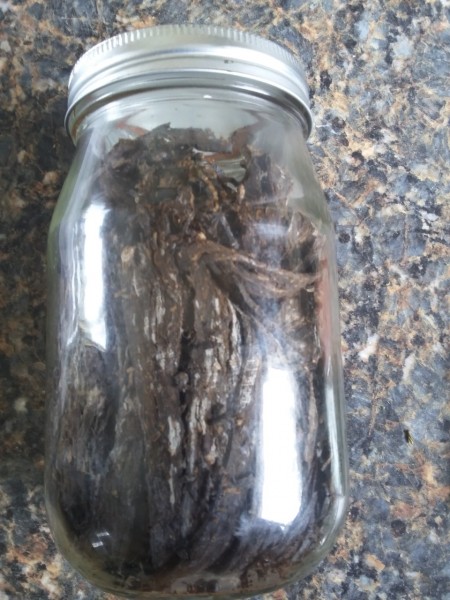

My oldest cellared tobacco is a jar of SG Best Brown Flake. I dated it Jan 1999. The stuff is almost 20 years old (and who knows how long it sat around the factory). It's never been opened.
I'm wondering if I should pop the top and replace the lid/seal. I can see that the lid is still sucked down as if it's still intact but Jesse's comments have me a bit concerned.
Maybe I'll open it up, smoke a few bowls then divide it into smaller mason jars with new lids.
Here's a pic of the 20 year old BBF


Kola, is the pop top seal still down? If it is, don't worry. If'n it ain't, just replace it with a new one.
I've never lost a Mason jar seal due to drying out. My tobacco lives in the same climate in my house as I do.
I have jars from the mid to late eighties that are just fine. Anyone who has jars that old or older, I'd love to hear how they're doing.
BTW, that BF looks damn fine. When ya going to smoke it?
I've never lost a Mason jar seal due to drying out. My tobacco lives in the same climate in my house as I do.
I have jars from the mid to late eighties that are just fine. Anyone who has jars that old or older, I'd love to hear how they're doing.
BTW, that BF looks damn fine. When ya going to smoke it?
Sorry to see that.... Such a shame.
Did get me thinking though.... Isn't this essentially similar to the processes that turn leaf into Perique?
Did get me thinking though.... Isn't this essentially similar to the processes that turn leaf into Perique?
Toby, yeah the seal still looks good (has that concaved sucked-down look) but I think I'm gonna pop it anyway, smoke a few bowls tonight with a beer and put the rest in smaller mason jars. BBF is probably my favorite VA with FVF close behind. Proper drying and cube cutting it (IMO) is the key to fully falling in love with these two SG weeds.
I'm sorry Brian, didn't mean for that.
on another note: Not too long ago (2-3 years) I've bought some boxes of SG fresh from the retailers and seen beautiful fermentation on them.
on another note: Not too long ago (2-3 years) I've bought some boxes of SG fresh from the retailers and seen beautiful fermentation on them.
BTW, that figure of 5 to 10 years on the seal of a mason jar was taken from the manufacturer's info. Some may go longer, or not, but that's the range that is given.
I've stopped saying that aging is an improvement. It's a change in how the blend tastes. Whether that change is an improvement or not is up to the individual smoker to decide.
A couple of years ago, one of the members here contacted Robert Germain on the topic and he basically said that all of their blends were ready to be enjoyed upon release and that people should stop "fapping about" with the aging talk.
I've stopped saying that aging is an improvement. It's a change in how the blend tastes. Whether that change is an improvement or not is up to the individual smoker to decide.
A couple of years ago, one of the members here contacted Robert Germain on the topic and he basically said that all of their blends were ready to be enjoyed upon release and that people should stop "fapping about" with the aging talk.
- Status
- Not open for further replies.



